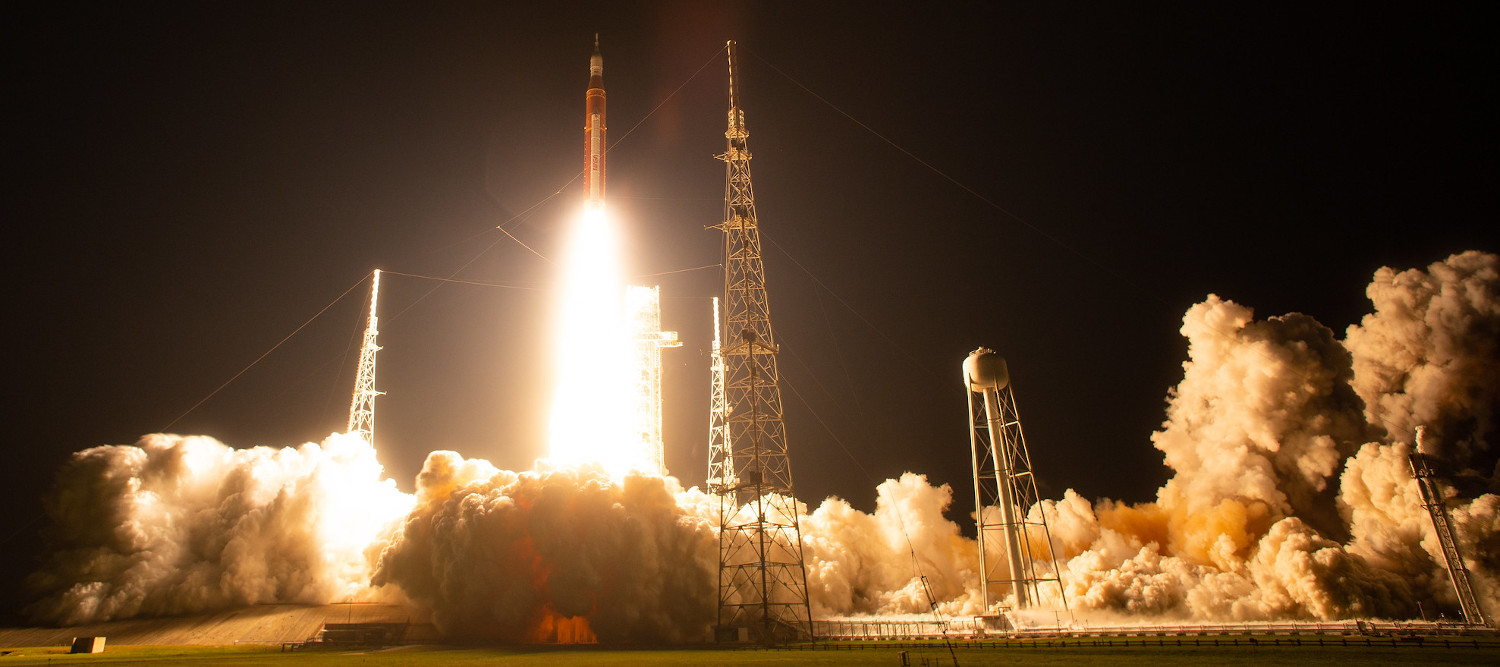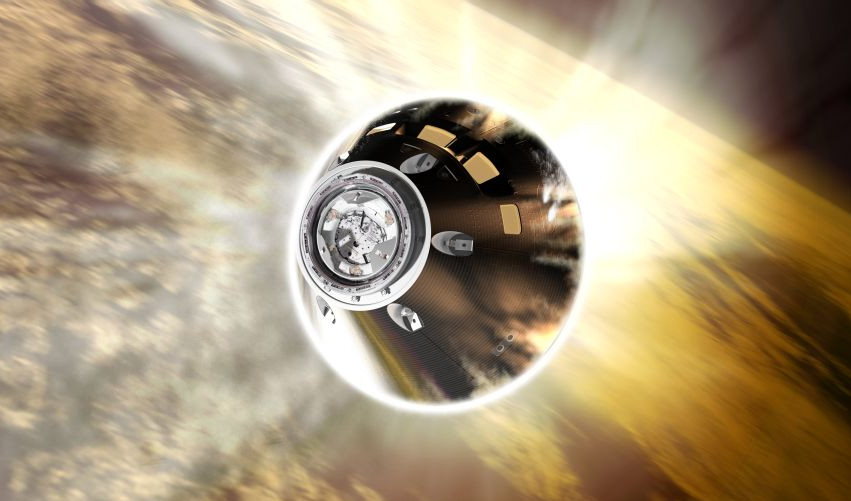NASA Aces Artemis I, But The Journey Has Just Begun
When NASA’s Orion capsule splashed down in the Pacific Ocean yesterday afternoon, it marked the end of a journey that started decades ago. The origins of the Orion capsule can be tracked back to a Lockheed Martin proposal from the early 2000s, and development of the towering Space Launch System rocket that sent it on its historic trip around the Moon started back in 2011 — although few at the time could have imagined that’s what it would end up being used for. The intended mission for the incredibly powerful Shuttle-derived rocket changed so many times over the years that for a time it was referred to as the “Rocket to Nowhere”, as it appeared the agency couldn’t decide just where they wanted to send their flagship exploration vehicle.

As NASA’s commentators reminded viewers during the live streamed segments of the nearly 26-day long mission around the Moon, the test flight officially ushered in what the space agency is calling the Artemis Generation, a new era of lunar exploration that picks up where the Apollo left off. Rather than occasional hasty visits to its beautiful desolation, Artemis aims to lay the groundwork for a permanent human presence on our natural satellite.
With the successful conclusion of the Artemis I, NASA has now demonstrated effectively two-thirds of the hardware and techniques required to return humans to the surface of the Moon: SLS proved it has the power to send heavy payloads beyond low Earth orbit, and the long-duration flight Orion took around our nearest celestial neighbor ensured it’s more than up to the task of ferrying human explorers on a shorter and more direct route.
But of course, it would be unreasonable to expect the first flight of such a complex vehicle to go off without a hitch. While the primary mission goals were all accomplished, and the architecture generally met or exceeded pre-launch expectations, there’s still plenty of work to be done before NASA is ready for Artemis II.
Taming the SLS
The idea behind the SLS was to use flight-proven hardware from the Space Shuttle, namely the RS-25 engines and solid rocket boosters (SRBs), as a time and cost saving measure. Unfortunately, much like the dreams of rapid reusability for the Shuttle itself, the reality of the situation ended up being considerably more complicated. While the SLS engines and boosters started their lives as Shuttle parts, their final form was different enough that it took years of testing and research to be sure the numerous modifications made to the legacy hardware would work as expected.
These delays extended right up to the launch itself, which was held back several times due to technical issues. Of particular note were the difficulties experienced when loading propellants onto the vehicle, which ranged from numerous leaks to jammed valves. These delays became increasingly worrisome, as some components of the rocket were only rated to remain viable for a certain amount of time. If the rocket didn’t launch before the end of the year, some key components would have to be pulled off, examined, and potentially replaced — further delaying the mission.

Ultimately, after several trips to and from the pad, the issues were resolved and the SLS roared skyward from Launch Complex 39B on November 16th at 1:37 Eastern Time. The launch was spectacular by all accounts, as the world’s most powerful operational rocket briefly turned night into day over the Florida coast.

Luckily, there’s plenty of time to make repairs. It will be at least a year and half before another SLS lifts off from Complex 39B, and by then they will likely have found ways to strengthen the parts of the pad that were hit the hardest. What’s important is that the oft-maligned megarocket performed perfectly, with a deviation of less than 0.3% from NASA’s projections.
Hampered Hitchhikers
As we reported earlier, ten CubeSats were packed inside the stage adapter that connected the Interim Cryogenic Propulsion Stage (ICPS) to the Orion capsule. After the capsule moved a safe distance away, these independent spacecraft were automatically dispensed so they could continue on with their own missions. At least, that was the idea.
Between the relatively fragile nature of the CubeSats, and the fact that some of them could not have their batteries charged once they were installed in the rocket, it was always unlikely that all of the craft would survive. At the time of this writing, six seven of the ten CubeSats packed away on Artemis I are currently operational, and unfortunately some of the most ambitious missions are among the casualties.

Japan’s OMOTENASHI was designed to demonstrate the ability to land small scientific payloads on the lunar surface at extreme low cost, but mission controllers were unable to establish stable communications with the craft after it separated from the ICPS.
It’s believed the CubeSat failed to orient its solar panels properly, and thus was unable to charge its batteries. If this is the case, there may still be a chance to reestablish contact with the craft at a later date as it travels through deep space, but the window to make a lunar landing has already past.
NASA’s own Near-Earth Asteroid Scout (NEA Scout) was sadly a complete failure, as ground controllers were never able to establish communication with the craft. An emergency signal was transmitted which should have triggered the deployment of the CubeSat’s 85 m2 (910 sq ft) solar sail, but telescope observations confirmed it was never unfurled. It’s also being reported that ground controllers have lost communications with the CubeSat to Study Solar Particles (CuSP) and Team Miles spacecraft.
Update: As of December 9th, ground stations have picked up a signal from the Team Miles CubeSat.
While the loss of these missions is disappointing, surviving craft such as the Italian Space Agency’s ArgoMoon demonstrator, Japan’s EQUULEUS, and NASA’s BioSentinel promise to deliver fascinating data in the coming months.
Orion’s Trial by Fire
As the Orion capsule already performed a successful demonstration flight back in 2014 as part of the Exploration Flight Test-1, NASA was already fairly confident in the capabilities of their latest human-rated spacecraft. But there was still one component of the system that hadn’t quite been put through its paces: the heat shield.

In addition, NASA also used Artemis I to test a new “skip maneuver” during entry. Rather than simply plowing through the atmosphere like the Space Shuttle did, this approach sees the capsule literally bounce off the upper atmosphere to kill off some of its initial velocity, before settling back down for a second reentry event. The advantage of this approach is that it not only reduces the g-forces experienced by the crew, but allows for greater accuracy during splashdown. Artemis crews will end their missions closer to the coast of the United States than their Apollo predecessors, which will allow for more rapid recovery operations.
Diving into the Data
Obviously, the fact that the Orion capsule traveled around the Moon and returned safely to Earth means the Artemis I mission was an overall success. But there’s still an incredible amount of data that needs to be analyzed before engineers will really know how the vehicle performed and where improvements can be made. There’s also data from scientific experiments aboard the craft, such as the sensor-laden manikin sitting in the commander’s seat, that so far NASA hasn’t commented on. As we move from the quick visits of Apollo to the long-duration stays of later Artemis missions, information on how the deep space environment impacts the human body will be critical.
So while today the folks at NASA are likely taking a well deserved break to celebrate the return of Orion and the completion of the first official Artemis mission, their work is far from over. Expect to see many announcements and reports released throughout 2023 as engineering teams make sense of the terabytes worth of information that was collected during this unprecedented deep space flight. We’re excited by the promise of the Artemis Generation, and can’t wait to see what discoveries lie over the horizon.



